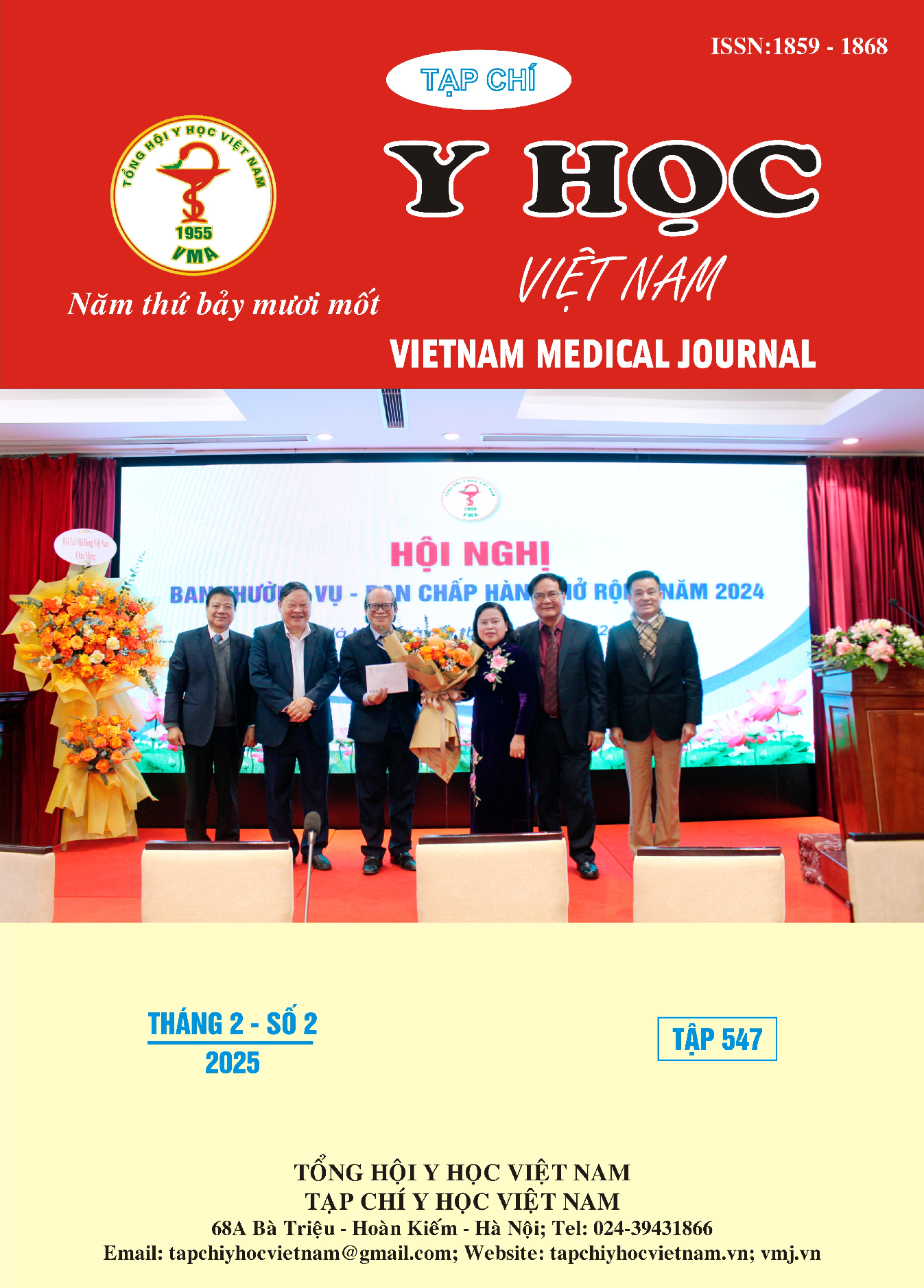THE IMPROVEMENT OF MOTOR SYMPTOM SUBGROUPS AFTER DEEP BRAIN STIMULATION SURGERY IN PATIENTS WITH ADVANCED PARKINSON’S DISEASE
Main Article Content
Abstract
Background: Deep brain stimulation (DBS) is an invasive therapy that helps improve motor symptoms in patients with advanced Parkinson's disease. However, the effectiveness of DBS on subgroups of motor symptoms has not been evaluated in Vietnam. Methods: This was a prospective observational study. Patients with advanced Parkinson's disease treated with DBS were included in the study. Participants were collected demographic information, clinical characteristics, medication treatment, DBS parameters and were evaluated with the MDS-UPDRS at “off DBS/off medication”, “on DBS/off medication” and “on DBS/on medication”. Statistical analysis was done using SPSS 20 software. Results: A total of 39 advanced Parkinson's disease patients were included in our study. The average age at the time of the study was 63.1 ± 9.6 years. Time duration from DBS was 3.05 ± 2.71 years. The total levodopa equivalent dose (LED) was 480 ± 276 mg. Subgroups of motor symptoms such as tremor, rigidity, bradykinesia, gait disorders showed improvement, with total MDS-UPDRS part III in the "off” DBS/”off” medication and "on” DBS/”off” medication were respectively 12.97 ± 7.46 and 4.41 ± 4.43; 11.46 ± 2.45 and 6.33 ± 3.16; 27.44 ± 6.62 and 17.77 ± 5.52; 7.94 ± 3.85 and 5.79 ± 3.47; and 63.92 ± 17.002 and 37.59 ± 13.463 (p<.001). Balance symptoms improved less with the “off DBS”/off medication” and “on DBS/off medication” of 2.44 ± 1.19 and 1.79 ± 1.42, respectively (p=0.04). Voice symptom showed no improvement with DBS (p=1). All subgroups of motor symptoms improved in the "on” DBS/”on” medication stage (p<0.001). Conclusions: In patients with advanced Parkinson's disease, DBS significantly improved motor symptoms such as tremor, rigidity and bradykinesia but little improved balance symptom and did not improve voice symptom.
Article Details
Keywords
Parkinson’s disease, deep brain stimulation, MDS-UPDRS, motor symptoms
References
2. Connolly B. S., Lang A. E. (2014), "Pharmacological treatment of Parkinson disease: a review". Jama, 311 (16), pp. 1670-83.
3. Sveinbjornsdottir S. (2016), "The clinical symptoms of Parkinson's disease". J Neurochem, 139 Suppl 1, pp. 318-324.
4. Okun M. S., Fernandez H. H., Pedraza O., al. et (2004), "Development and initial validation of a screening tool for Parkinson disease surgical candidates". Neurology, 63 (1), pp. 161-3.
5. Weaver F. M., Follett K., Stern M., al. et (2009), "Bilateral deep brain stimulation vs best medical therapy for patients with advanced Parkinson disease: a randomized controlled trial". Jama, 301 (1), pp. 63-73.
6. Blomstedt P., Stenmark Persson R., Hariz G. M., et al. (2018), "Deep brain stimulation in the caudal zona incerta versus best medical treatment in patients with Parkinson's disease: a randomised blinded evaluation". J Neurol Neurosurg Psychiatry, 89 (7), pp. 710-716.
7. Fahn S., Oakes D., Shoulson I., al. et (2004), "Levodopa and the progression of Parkinson's disease". N Engl J Med, 351 (24), pp. 2498-508.
8. Castrioto A., Lozano A. M., Poon Y. Y., al. et (2011), "Ten-year outcome of subthalamic stimulation in Parkinson disease: a blinded evaluation". Arch Neurol, 68 (12), pp. 1550-6.
9. Rodriguez-Oroz M. C., Obeso J. A., Lang A. E., al. et (2005), "Bilateral deep brain stimulation in Parkinson's disease: a multicentre study with 4 years follow-up". Brain, 128 (Pt 10), pp. 2240-9.


